Electrochemical sensors for environmental monitoring. Strategy and ...
Electrochemical sensors for environmental monitoring. Strategy and ...
Electrochemical sensors for environmental monitoring. Strategy and ...
Create successful ePaper yourself
Turn your PDF publications into a flip-book with our unique Google optimized e-Paper software.
1974<br />
C. M. A. BRETT<br />
suming <strong>and</strong> to be avoided if possible <strong>for</strong> continuous or regular <strong>monitoring</strong>, there are three main ways<br />
of reducing these problems:<br />
1. The time during which adsorption of the poisoning substance—possibly the product of the electrode<br />
reaction—occurs is reduced to a minimum via reduction of the contact time of the analyte<br />
with the electrode or the time during which the potential corresponding to adsorption is applied,<br />
as discussed above.<br />
2. Making the surface of the electrode exposed to the solution incompatible with adsorption by modification<br />
or covering with a specially designed membrane.<br />
3. Disposable electrodes, which are only employed <strong>for</strong> a short period of time during which adsorption<br />
problems are negligible.<br />
With respect to the second strategy, polymer-modified electrodes have found widespread use <strong>for</strong><br />
reducing the effects of surface blocking particularly from proteins <strong>and</strong> surfactants. Using as an example<br />
the measurement of heavy metals, cation exchange membranes such as Nafion can be used to protect the<br />
surface while permitting the metal ions to traverse the film through to the electrode below—usually a<br />
mercury thin film [23]. This concept has been combined with batch injection analysis, which is using<br />
microlitre volumes of analyte, with excellent results in the measurement of <strong>environmental</strong> samples. No<br />
memory effects were found between successive injections, <strong>and</strong> this strategy enables the measurement of<br />
the labile fraction of the heavy metals in the raw effluent analyte samples without pretreatment [24].<br />
It was also shown that the technique is well suited to the measurement of labile heavy metal ions<br />
in toxicity tests undertaken with model organisms [25]. Additionally, carbon paste electrodes bulk modified<br />
with soil have been used to assess the labile fraction <strong>and</strong> thence heavy metal ion interactions, <strong>and</strong><br />
it may be extremely useful <strong>for</strong> doing the same with nutrients used <strong>for</strong> toxicity tests [26].<br />
Other routes involve placing the whole electrical circuit behind the ion-exchange membrane. The<br />
indicator electrode must then be porous, <strong>and</strong> the membrane acts as a polymer electrolyte—this also<br />
solves the problem of high electrolyte resistance in the outer solution as well as reducing the influence<br />
of flow [27].<br />
Alternatively, the sensor can be placed behind a microdialysis membrane which serves to extract<br />
the component of interest in the analyte <strong>and</strong> prevent contamination. In [28] a submersible probe <strong>for</strong><br />
chromium involves transport from the exterior through a microdialysis membrane, the inner solution<br />
containing a complexing lig<strong>and</strong> that makes the determination of Cr(III) possible.<br />
Inorganic polymer layers, namely clays <strong>and</strong> zeolites, are also of current interest as these show different<br />
adsorption properties toward potential analytes, see [29] <strong>for</strong> a review.<br />
The third strategy relies on the use of disposable <strong>sensors</strong> that are used only once or <strong>for</strong> a short<br />
period of time. Ideally, these would need no calibration. Examples of graphite film disposable <strong>sensors</strong><br />
based on screen printing can be found in the literature, e.g., [30]. Miniaturized thin film <strong>sensors</strong> can also<br />
be made by lithographic techniques, <strong>and</strong> this subject has been recently reviewed [31].<br />
Sonoelectroanalysis is a new route that holds promise as a way of keeping the electrode surface<br />
clean while simultaneously increasing convection. This has been reviewed [32]. Applications to metal<br />
ion determination in complex media with polymer-coated electrodes have been demonstrated, e.g.,<br />
[33,34], although it is unlikely that this will be used outside the laboratory. Additionally, born-doped<br />
diamond electrodes have been used in the positive potential range [35].<br />
Bio<strong>sensors</strong> <strong>and</strong> detectors <strong>for</strong> pesticides<br />
Organic pollutants have been investigated widely in the laboratory, particularly pesticides. This has usually<br />
been following separation of complex mixtures, <strong>and</strong>, if electrochemically, usually by oxidation at<br />
carbon electrodes; problems of electrode fouling can be acute. The use of bio<strong>sensors</strong>, i.e., a modified<br />
electrode in which the modifier is a biologically active molecule, can lead to other possibilities [36].<br />
© 2001 IUPAC, Pure <strong>and</strong> Applied Chemistry 73, 1969–1977


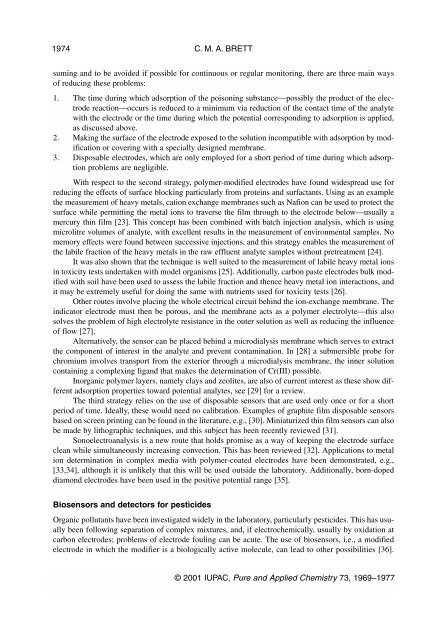
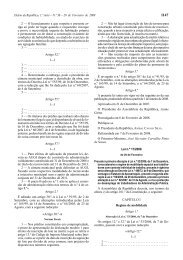
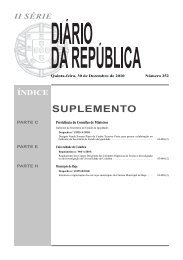
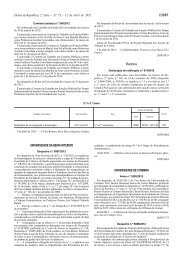
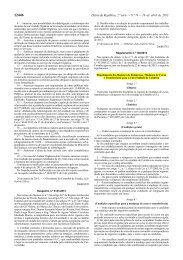
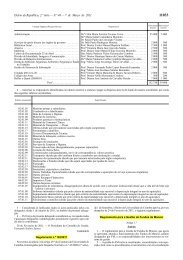
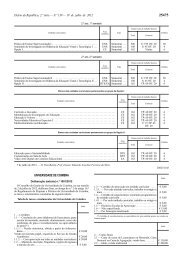
![RL #35 [quadrimestral. Julho 2012] - Universidade de Coimbra](https://img.yumpu.com/27430063/1/190x234/rl-35-quadrimestral-julho-2012-universidade-de-coimbra.jpg?quality=85)
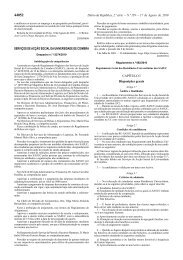

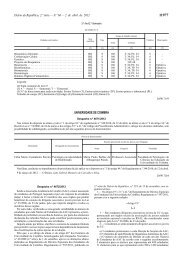
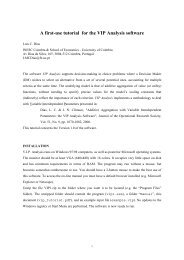
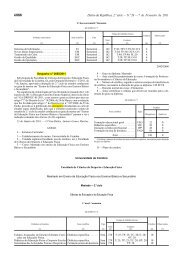

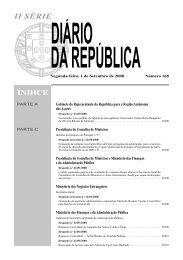
![RL #34 [quadrimestral. Março 2012] - Universidade de Coimbra](https://img.yumpu.com/27430022/1/190x234/rl-34-quadrimestral-marao-2012-universidade-de-coimbra.jpg?quality=85)